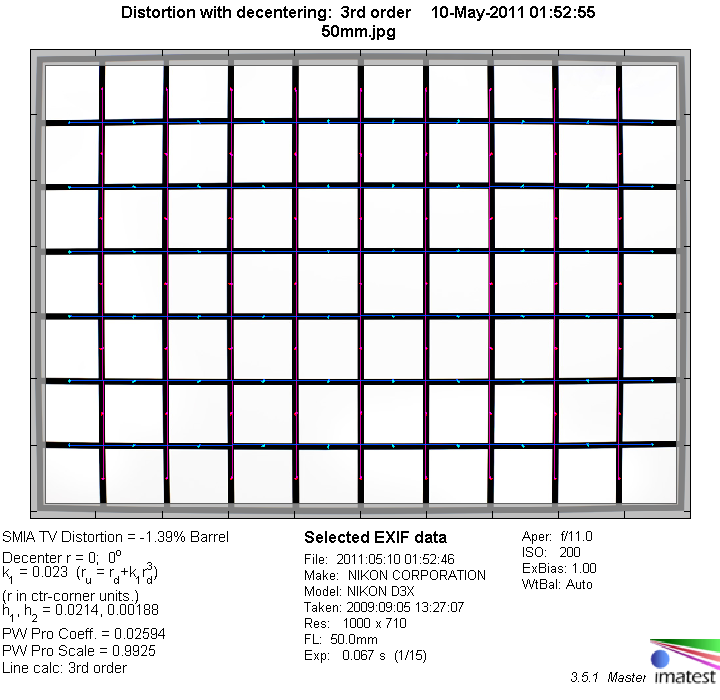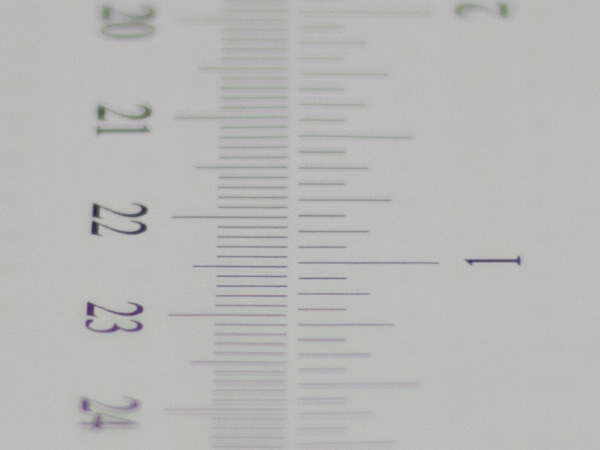|
Zeiss Planar T* 50mm f/1.4 ZF (FX) - Review / Test Report - Analysis |
|
Lens Reviews -
Nikon / Nikkor (full format)
|
|
Page 2 of 3

Distortion
The Zeiss ZF 50mm f/1.4 produces a slight to moderate degree (1.4%) of barrel distortion.

The chart above has a real-world size of about 120x80cm.
Vignetting
The Zeiss lens joins the rest of the gang regarding its vignetting characteristic on full format DSLRs. It shows a quite hefty light falloff at f/1.4. The issue is still fairly pronounced at f/2 so if you want to tame the issue you should stop down to f/2.8 or smaller apertures.
We're performing our vignetting analysis based on
(uncorrected) JPEGs straight from the camera. The JPG engine of the Nikon D3x features a rather flat
gradation curve, thus has a moderate contrast characteristic, resulting in comparatively low vignetting figures - the
corresponding Canon figures are roughly 40% higher due to the more
aggressive default contrast setting.

MTF (resolution)
Traditionally 50mm lenses were and are still a benchmark for film as well as image sensors. That's certainly true regarding the peak performance but the Zeiss lens disappoints at large aperture settings. The center performance is convincing even at f/1.4 but the border/corner quality is poor here. The contrast could also be better. The situation starts to change at f/2.8 where the border quality jumps to very good figures although the corners remain so-so. Stopping down to f/4 boosts the quality to the max. The center quality is outstanding here and even the corners reach very good results. The global peak performance is reached around f/5.6.
Please note that the MTF results are not directly comparable across the different systems!
Below is a simplified summary of the formal findings. The chart shows line widths
per picture height (LW/PH) which can be taken as a measure for sharpness.
If you want to know more about the MTF50 figures you may check out the corresponding
Imatest Explanations

Chromatic Aberrations (CAs)
Chromatic aberrations (color shadows at harsh contrast transitions) are comparatively well controlled with an average CA pixel width of up to 1.7px at the image borders. This may be visible upon closer observation but it's usually a non-issue.

Bokeh
The bokeh (quality of the out-of-focus blur) is generally pretty good. Out-of-focus highlights show
a slight outlining effect at f/1.4 but they're very smooth at f/2.8 and beyond. The blur is fairly smooth
in the focus transition zones. However, the border/corners are somewhat "smeared" at large apertures.

Bokeh Fringing
The Zeiss lens shows very pronounced bokeh fringing at large apertures - this is typical for such lenses.
These green/purple halos in the focus transition zones are very obvious at f/1.4 and still visible at f/2.
There's still a slight fringing hint at f/2.8 although that's hardly field-relevant anymore.
You may also notice the focus shift (RSA) when stopping down from f/2 to f/2.8.
|
Move the mouse cursor over the f-stop marks below to observe the respective bokeh fringing
|
| f/1.4 |
f/2 |
f/2.8 |
|

|
|